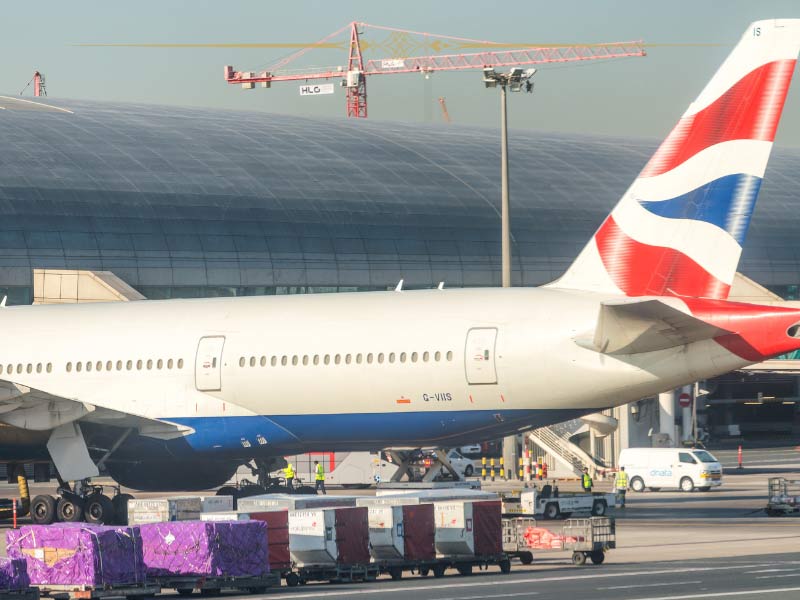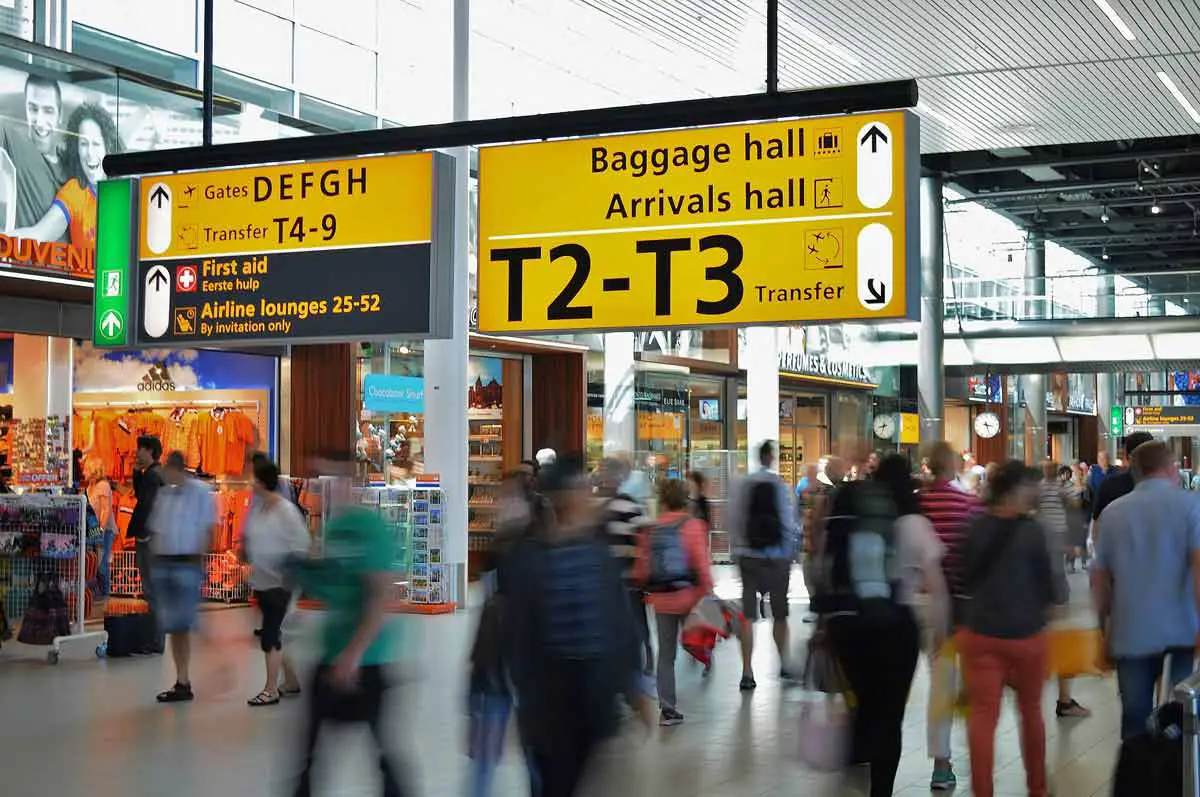A split-second mental lapse during a routine takeoff procedure brought operations at one of London’s busiest airports to a standstill, causing travel chaos for thousands of passengers and raising questions about human factors in aviation safety. The incident, which resulted in an aircraft fire and runway closure at Gatwick Airport, demonstrates how even the most experienced aviation professionals can experience momentary confusion with significant consequences.
Major Disruption at London Transport Hub

On a busy summer Friday in late June, travelers at London Gatwick Airport faced unexpected travel disruptions when a scheduled transatlantic flight experienced an emergency during its takeoff roll. The incident forced the closure of the airport’s main runway for several hours, creating ripple effects throughout the European air traffic system.
The disruption occurred during peak travel season, affecting dozens of flights and thousands of passengers. Airport authorities were forced to implement emergency protocols, diverting arriving aircraft to alternative airports across southern England and canceling numerous departures.
Air traffic controllers worked frantically to manage the situation as the disabled aircraft remained on the runway, blocking all movements at what is normally one of Europe’s busiest single-runway airports. Ground crews and emergency responders mobilized quickly to address the situation, but the nature of the incident required thorough safety checks before normal operations could resume.
The timing of the incident—during the morning departure bank for long-haul flights—maximized its impact on the day’s operations. As the situation unfolded, terminal areas quickly became congested with delayed passengers, while airlines scrambled to develop contingency plans for affected travelers.
For many passengers, what should have been the start of summer holidays or important business trips instead became a day of uncertainty and frustration. The incident would ultimately affect more than 5,000 travelers across multiple airlines, with some facing delays extending into the following day.
The aircraft involved—a wide-body Boeing 777 configured for long-haul operations—was fully loaded with passengers, crew, and fuel for its transatlantic journey to Vancouver, Canada. With nearly 350 souls on board, the aircraft had pushed back from its gate and taxied normally to Gatwick’s departure runway.
After receiving clearance from air traffic control, the flight crew began the takeoff sequence, advancing the throttles to initiate the aircraft’s acceleration down the runway. Everything appeared normal during the initial phase of the takeoff roll as the massive twin-engine jet gathered speed.
The standard procedure for takeoff in this aircraft type involves specific hand placement and coordination between the two pilots. The flying pilot typically places one hand on the throttle levers to control engine power while positioning the other on the control column, ready to rotate the aircraft at the appropriate speed.
As the aircraft accelerated through approximately 100 knots (115 mph), the cockpit voice recorder captured normal callouts between the two pilots. However, as the aircraft approached its decision speed—the critical point after which a takeoff typically continues regardless of most malfunctions—something unusual happened.
Instead of maintaining thrust and preparing to lift the aircraft’s nose at rotation speed, the flying pilot made an unexpected control input. With the aircraft traveling at more than 190 mph—nearly takeoff speed—this deviation from standard procedure triggered an emergency situation requiring immediate response.
The captain, recognizing the developing situation, immediately initiated rejected takeoff procedures. This emergency maneuver involves maximum braking, deploying thrust reversers, and activating additional stopping devices to bring the aircraft to a halt in the shortest possible distance.
The massive aircraft, weighing approximately 300 tons and traveling at high speed, required tremendous energy dissipation to stop. The carbon brakes, designed to absorb this energy, rapidly heated to extreme temperatures—a normal but concerning aspect of such emergency stops.
From Momentary Confusion to Emergency Response
As the aircraft decelerated rapidly on the runway, the intense heat generated by the braking action caused thermal warning indicators in the cockpit to activate. These warnings alerted the flight crew to potential issues with the landing gear system.
The aircraft came to a complete stop approximately two-thirds of the way down the runway. Following standard emergency procedures, the captain maintained communication with air traffic control while the first officer conducted system assessments to determine the aircraft’s status.
Airport fire and rescue services responded immediately, arriving at the aircraft’s position within minutes of the event. Emergency personnel identified visible smoke and then flames emanating from the right main landing gear assembly—a direct result of the extreme heat generated during the emergency stop.
Using specialized equipment designed for aircraft fires, emergency responders quickly extinguished the flames before they could spread to other parts of the aircraft. The prompt response prevented what could have developed into a more serious situation.
Inside the cabin, flight attendants prepared for a potential evacuation while maintaining calm among passengers. After assessing the situation and confirming there was no immediate danger to those on board, the captain made the decision to keep passengers on the aircraft while technical teams evaluated the damage.
Airport operations personnel immediately implemented contingency plans, closing the runway to all traffic and initiating diversions for inbound flights. The airport’s second runway, which normally operates with restrictions, could not accommodate the full schedule, necessitating significant adjustments to the day’s flight plan.
Human Factors in Aviation Safety
Subsequent investigation into the incident revealed a surprising cause: the flying pilot had momentarily confused left and right during a critical phase of the takeoff sequence. This type of error, sometimes termed an “action slip” by human factors specialists, occurs when a well-trained professional unintentionally performs an action different from what was intended.
The co-pilot, who had accumulated more than 6,000 hours of flight experience and completed thousands of takeoffs without incident, was unable to explain the momentary confusion. Physical fatigue did not appear to be a factor, as the pilot reported being well-rested and alert prior to the flight.
Human factors experts note that such errors, while rare, can occur even among highly trained professionals. The aviation industry has long recognized that human performance is influenced by numerous factors including workload, stress, environmental conditions, and psychological state.
Cognitive scientists refer to these momentary lapses as “skill-based errors”—mistakes that occur during the execution of highly practiced, largely automatic behaviors. These errors differ from knowledge-based mistakes (not knowing what to do) or rule-based errors (applying the wrong procedure).
Research indicates that even experienced professionals occasionally experience brief disorientation regarding directional concepts like left and right. These momentary confusions typically pass unnoticed in everyday life but can have significant consequences in operational environments where precision is critical.
The aviation industry’s approach to such errors has evolved significantly over recent decades. Rather than focusing solely on individual performance, modern safety systems acknowledge human limitations and build redundancies and safeguards to catch and correct inevitable errors before they lead to serious consequences.
In this case, the aircraft’s two-pilot design functioned as intended. When one pilot experienced momentary confusion, the other recognized the developing situation and intervened appropriately, preventing a potentially more serious outcome.
Technological Safeguards and Human Oversight
Modern commercial aircraft incorporate numerous systems designed to alert crews to unusual situations and provide additional safety margins. In this incident, several of these systems functioned as designed to help manage the developing situation.
The aircraft’s brake temperature monitoring system provided critical information to the flight crew about the thermal condition of the landing gear after the emergency stop. This allowed for appropriate decision-making regarding the need for emergency services and potential evacuation.
Communication systems maintained continuous contact between the flight crew, air traffic control, and emergency responders throughout the incident. This coordination ensured that all parties had a clear understanding of the situation and could respond appropriately.
The aircraft’s flight data recorder and cockpit voice recorder captured comprehensive information about the event, allowing for detailed analysis afterward. These “black boxes” provide invaluable data for understanding the sequence of events and improving procedures for the future.
While automation continues to advance in commercial aviation, this incident highlights the continuing importance of skilled human operators who can recognize and respond to unusual situations. The captain’s quick decision to reject the takeoff and manage the subsequent events demonstrated the value of experienced human judgment.
Aviation safety experts note that the incident represents a “successful failure”—a situation where something went wrong, but established procedures, training, and systems prevented escalation to a more serious outcome. These types of events provide valuable learning opportunities without catastrophic consequences.
Passenger Experience During the Emergency
For the 347 passengers aboard the aircraft, what began as a routine departure quickly transformed into a memorable, if unsettling, experience. The aircraft’s sudden deceleration during the rejected takeoff created moments of confusion and concern in the cabin.
Following standard procedures, cabin crew immediately adopted their “brace for impact” positions during the emergency stop, then prepared for potential evacuation once the aircraft came to a halt. Passengers later reported that while the stop was abrupt and concerning, cabin crew maintained a professional demeanor throughout.
As the situation stabilized and it became clear there was no immediate danger to those on board, the captain provided regular updates to passengers about the nature of the situation and next steps. This communication helped manage anxiety and prevent potential panic among travelers.
After approximately 45 minutes, during which emergency services addressed the brake fire and conducted preliminary safety assessments, passengers were transferred from the aircraft back to the terminal via airport buses. The orderly deplaning process prioritized those with connecting flights and passengers with special assistance needs.
Back in the terminal, airline representatives established a special assistance area for affected passengers. Given the aircraft’s condition and required inspections, it became clear that the original aircraft could not operate the scheduled flight, necessitating alternative arrangements for all passengers.
Airline personnel worked to rebook passengers on alternative flights, arrange hotel accommodations for those facing overnight delays, and provide meal vouchers and other amenities to minimize inconvenience. Priority was given to families with young children and passengers with medical needs.
Despite these efforts, the incident created significant disruption for travelers. With limited availability on alternative flights during the peak summer season, some passengers faced delays of 24 hours or more before reaching their final destination.
Broader Impact on Airport Operations
The incident’s impact extended far beyond the affected flight and its passengers. As one of the busiest single-runway commercial airports in the world, Gatwick operates with minimal spare capacity during peak periods. Any disruption tends to have cascading effects throughout the system.
Within hours of the incident, sixteen inbound flights that had already departed their origin airports were forced to divert to alternative destinations including London’s Heathrow and Stansted airports, as well as regional airports in Southampton and Birmingham. These diversions created logistical challenges for airlines and passengers alike.
An additional 23 departing flights were canceled outright, affecting thousands of passengers who were already at the airport or en route. Airlines faced the challenge of rebooking these travelers while dealing with aircraft and crew that were now out of position for their scheduled rotations.
Airport retailers and food service establishments experienced a surge in demand as stranded passengers sought ways to pass the time during extended waits. Ground transportation services similarly faced pressure as travelers sought alternative routes to their destinations.
The runway closure lasted approximately four hours—relatively brief for such an incident but long enough to disrupt the tightly choreographed dance of arrivals and departures at the busy airport. Even after the runway reopened, the ripple effects continued for more than 24 hours as airlines worked to return to normal schedules.
For airport management, the incident provided a real-world test of emergency response protocols and contingency plans. The coordinated response between air traffic control, emergency services, airlines, and ground handling agents demonstrated the value of regular training and clear communication channels.
Learning From Near Misses
Aviation safety experts frequently note that the industry’s exceptional safety record results partially from its ability to learn from incidents that fall short of accidents. These “near misses” or “serious incidents” provide valuable insights without the tragic consequences of major accidents.
Following the event, a formal investigation was launched by the appropriate aviation safety authority. This independent examination gathered evidence including flight data recorder information, cockpit voice recordings, maintenance records, and interviews with all involved personnel.
The investigation focused not only on what happened but why it happened and how similar occurrences might be prevented in the future. This systems-based approach looks beyond individual actions to examine organizational factors, training protocols, and industry-wide practices.
Preliminary findings identified the specific human performance issue—momentary left/right confusion—that triggered the sequence of events. However, the investigation also examined contributing factors that might have influenced this error or affected the subsequent response.
The airline involved cooperated fully with investigators and simultaneously conducted its own internal review. This process included examining whether any adjustments to training procedures, cockpit protocols, or crew resource management techniques might reduce the likelihood of similar events.
While the investigation confirmed the pilot’s significant experience and previously unblemished record, it also highlighted how even the most skilled professionals remain susceptible to occasional slips in attention or perception. This recognition has important implications for training and operational procedures.
The event also demonstrated the effectiveness of existing safety systems. The two-pilot cockpit standard provided an immediate check and balance, while crew resource management training ensured clear communication during the emergency. Emergency response systems activated quickly and appropriately.
Enhancing Resilience in Aviation Systems
Aviation safety continues to evolve toward approaches that acknowledge human limitations and build systems resilient enough to absorb occasional errors without catastrophic consequences. This incident reinforces several key principles in modern safety thinking.
First, it demonstrates the value of error-tolerant systems—operational environments designed with the understanding that even the best-trained humans will occasionally make mistakes. By building in checks, redundancies, and recovery mechanisms, such systems prevent single points of failure.
Second, the incident highlights the importance of crew resource management—the set of training procedures and communication protocols that allow flight crews to function effectively as teams rather than as collections of individuals. When one team member experiences a problem, others can recognize and compensate.
Third, the event reinforces the continuing relevance of human expertise alongside advancing automation. While automated systems continue to assume greater roles in aircraft operation, the judgment and adaptability of well-trained human operators remain essential for managing unusual situations.
Fourth, the incident demonstrates how transparent reporting and investigation of safety events—without assigning blame—contributes to systemic improvement. By treating near misses as learning opportunities, the aviation industry continually refines procedures and training.
For passengers, the incident serves as a reminder of aviation’s multiple layers of protection. While the initial error created a concerning situation, multiple backup systems and trained professionals ensured that everyone returned safely home, albeit with disrupted travel plans.
Industry observers note that this event, while unwelcome for all involved, exemplifies how modern aviation safety systems are designed to be resilient rather than perfect—acknowledging that occasional errors will occur but preventing them from developing into serious accidents.
Recovering From Disruption
In the days following the incident, operations at the airport gradually returned to normal. Technical teams inspected the runway for any damage from the brake fire before certifying it for continued use. The affected aircraft underwent comprehensive inspection and testing before returning to service.
Airlines worked through the backlog of delayed passengers, prioritizing those whose travel plans were most severely impacted. Additional staff were deployed to customer service positions to handle the increased volume of rebooking requests and special assistance needs.
For the flight crew involved, standard protocols included immediate removal from flight duties pending preliminary investigation. This practice, standard across the industry, allows crew members time to process potentially stressful events and ensures fitness for duty before returning to operational roles.
The airline’s internal review focused on supportive measures rather than punitive actions, recognizing that the event resulted from a momentary human error rather than negligence or willful violation of procedures. This approach aligns with modern safety management systems that emphasize learning over blame.
Within aviation professional circles, the incident prompted informal discussions about human factors in flight operations and strategies for recognizing and managing momentary confusion during critical phases of flight. These conversations complement formal safety management systems and help disseminate lessons learned.
For the thousands of affected passengers, the incident became an unwelcome but ultimately manageable disruption to their travel plans. Many later received compensation under applicable passenger protection regulations, along with formal apologies from the airline.
In the broader context of commercial aviation’s remarkable safety record, the incident represents both a reminder of inevitable human limitations and a demonstration of how robust safety systems prevent such limitations from resulting in tragic consequences. It is through learning from these events that aviation continues its journey toward ever-higher levels of safety and reliability.




